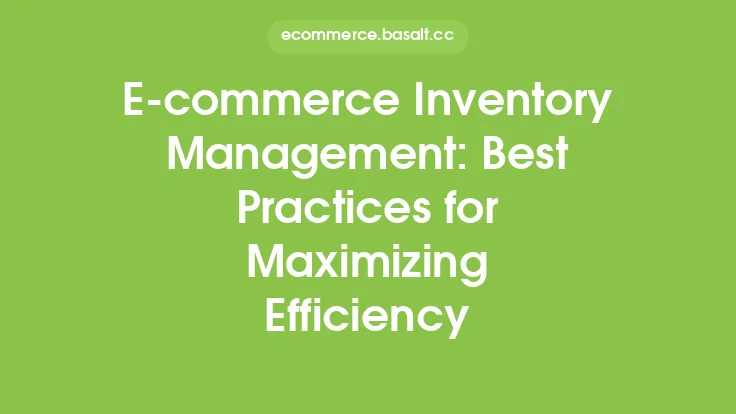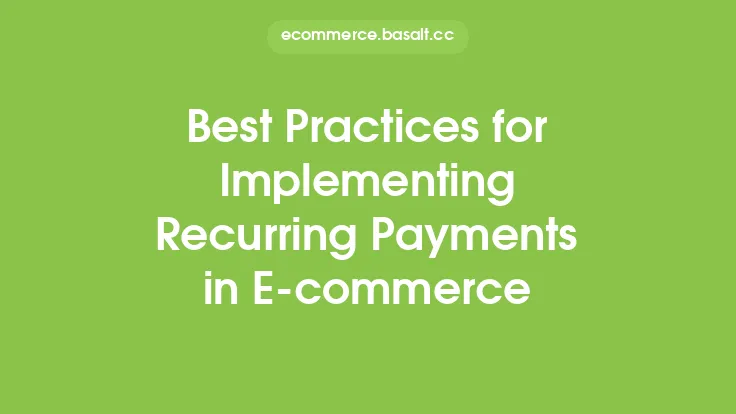In the world of e-commerce, product management is a crucial aspect that can make or break a business. It involves a wide range of activities, from product sourcing and inventory management to product development and launch. Effective product management enables e-commerce businesses to stay competitive, improve customer satisfaction, and increase revenue. In this article, we will delve into the best practices for streamlining product management in e-commerce, focusing on the evergreen information that remains relevant regardless of the latest trends or technologies.
Understanding Product Management
Product management is a holistic approach that encompasses the entire product lifecycle, from conception to launch and beyond. It involves understanding customer needs, developing products that meet those needs, and ensuring that the products are delivered to customers in a timely and efficient manner. In e-commerce, product management is critical because it directly impacts the customer experience, conversion rates, and ultimately, the bottom line. A well-managed product portfolio can help e-commerce businesses to differentiate themselves from competitors, build brand loyalty, and drive long-term growth.
Key Components of Product Management
There are several key components of product management that e-commerce businesses need to focus on. These include product development, product sourcing, inventory management, product pricing, and product marketing. Product development involves creating products that meet customer needs and are aligned with the business's overall strategy. Product sourcing involves finding reliable suppliers who can provide high-quality products at competitive prices. Inventory management involves managing stock levels, tracking inventory movements, and ensuring that products are available when customers need them. Product pricing involves setting prices that are competitive, profitable, and aligned with the business's overall pricing strategy. Product marketing involves promoting products to customers, creating awareness, and driving sales.
Best Practices for Streamlining Product Management
To streamline product management, e-commerce businesses need to adopt best practices that enable them to work efficiently, effectively, and collaboratively. Some of these best practices include:
- Defining a clear product strategy that aligns with the business's overall goals and objectives
- Conducting thorough market research to understand customer needs and preferences
- Developing a robust product roadmap that outlines the product development process and timelines
- Implementing a product lifecycle management (PLM) system to manage the entire product lifecycle
- Establishing a cross-functional product team that includes representatives from various departments, such as marketing, sales, and logistics
- Using data and analytics to inform product decisions and measure product performance
- Fostering a culture of continuous improvement and innovation, where feedback is encouraged and acted upon
The Role of Technology in Product Management
Technology plays a critical role in streamlining product management in e-commerce. There are many tools and software solutions available that can help e-commerce businesses to manage their products more efficiently. These include product information management (PIM) systems, enterprise resource planning (ERP) systems, and product lifecycle management (PLM) systems. PIM systems enable businesses to manage product data, such as product descriptions, images, and pricing. ERP systems enable businesses to manage back-office functions, such as inventory management, order management, and supply chain management. PLM systems enable businesses to manage the entire product lifecycle, from conception to launch and beyond.
Measuring Product Management Success
To measure the success of product management, e-commerce businesses need to establish key performance indicators (KPIs) that align with their overall goals and objectives. Some common KPIs for product management include product sales, product profitability, customer satisfaction, and product return rates. Businesses can use data and analytics to track these KPIs and make informed decisions about their products. They can also use feedback from customers, suppliers, and other stakeholders to identify areas for improvement and optimize their product management processes.
Conclusion
In conclusion, streamlining product management is critical for e-commerce businesses that want to stay competitive, improve customer satisfaction, and increase revenue. By understanding the key components of product management, adopting best practices, leveraging technology, and measuring success, e-commerce businesses can optimize their product management processes and achieve long-term growth. Whether you are a small startup or a large enterprise, effective product management is essential for success in the world of e-commerce. By focusing on the evergreen information and best practices outlined in this article, e-commerce businesses can build a strong foundation for product management and drive business success.





